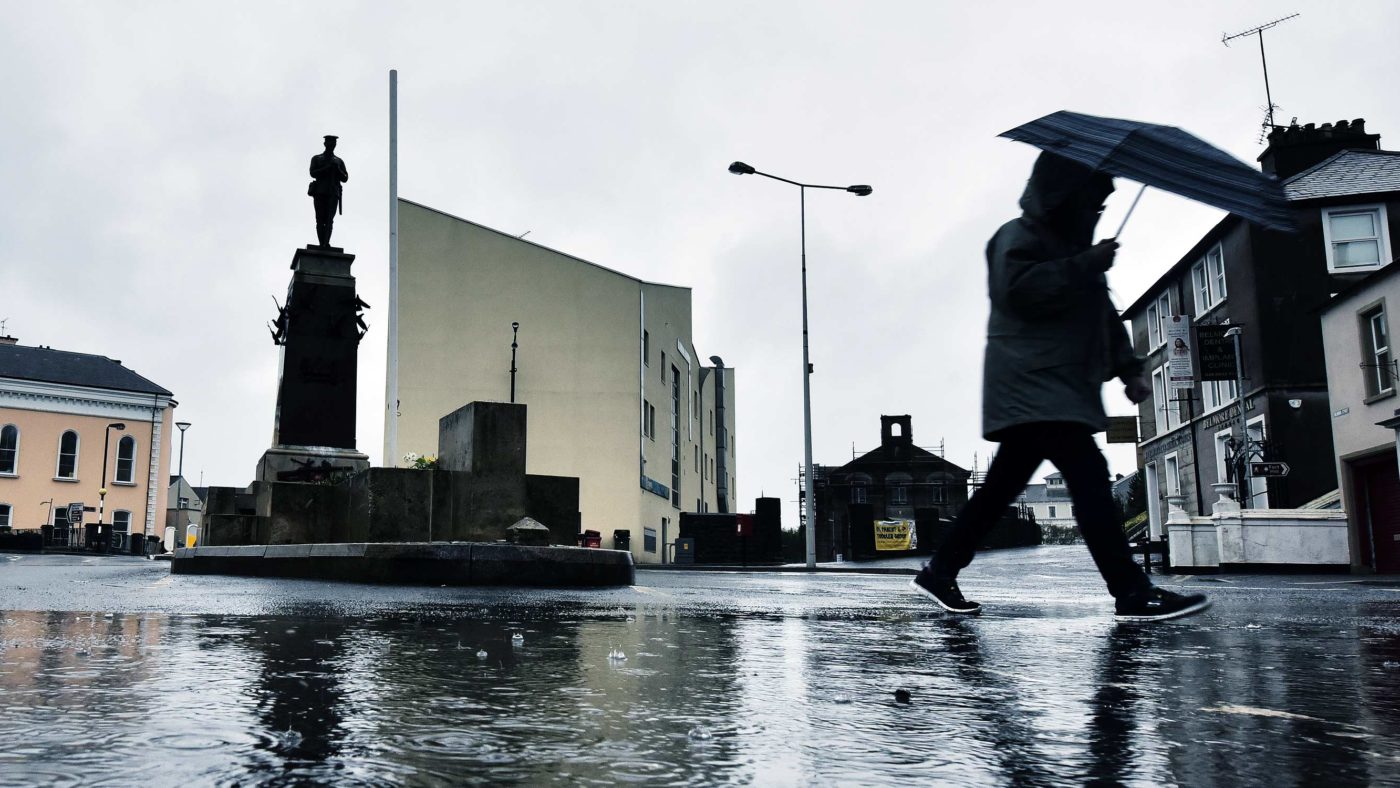You’ll probably need a strong stomach to wade through the Troubles oral history archive, one of the proposed innovations announced by the Secretary of State for Northern Ireland yesterday afternoon to replace the basic notion of justice and accountability.
‘My skull fractured like an eggshell. The eye sockets in my skull disintegrated into my head, the roof of my mouth was blown out. My right-hand jaw was missing from my chin to my ear. I had nine ribs broken and two hips smashed. My pelvis was broken and my leg badly smashed. I wasn’t really a candidate for living. I have had three operations this year. I had my 41st operation about three weeks ago.’
This is Jim Dixon speaking last year. Mr Dixon was standing with other townsfolk at the Enniskillen war memorial in 1987 when his life was permanently shattered by an IRA bomb in an act of barbarity so profound it was condemned by the Kremlin. He was lucky, if that’s a word that can be used. Eleven other people were murdered on that day and countless others will carry the physical and mental scars to their graves. No one has ever been prosecuted for this monstrous crime and if Brandon Lewis proposals are adopted, no one ever will be.
Northern Ireland’s tens of thousands of living victims of terrorist violence are being asked to accept a line being drawn under their suffering – or as North Down MP Stephen Farry put it, with surprising eloquence, a line through justice. This line is a statute of limitations, a cold calculus drawn on the diminishing possibility that after all these years evidence will lead to convictions. If you lost your father, mother, children, legs, eyes or mind to paramilitary violence before the 1998 Belfast Agreement, the obligation of the state shifts from pursuit of justice to ‘information retrieval’.
Moral hazards? Let me count the ways. But let’s stick with some practicalities for now.
We are told that a ‘truth and reconciliation’ process would be far more efficient for closure for victims than the sclerotic criminal justice route. For some people this may be the case – think of those abducted by the IRA and buried in unmarked graves who haven’t even a body to grieve over for example.
But how would more ‘truth’ help people like Kathleen Gillespie for example, whose husband Patsy, a chef in an army base, was chained to an IRA bomb which was then detonated at a checkpoint. The ‘truth’ is he was only identifiable from a piece of human tissue adhering to a zip after terrorists blew him and six British soldiers to pieces. Is it remotely likely that the beasts who ordered and operated this ISIS playbook atrocity would put themselves forward in the public eye to account for their barbarism merely because they would now be free from prosecution? The dogs in the street know the answer.
Brandon Lewis has argued that a ‘retributive’ approach is impeding information recovery. But such answers as may be sanctioned by the army council – still running Sinn Fein according to police either side of the Irish border – are highly unlikely to bring closure to victims. Where is the incentive? Sinn Fein has been winning the propaganda war with Troubles victims now virtually recast as their own perpetrators in a human rights struggle. Where is the benefit for them in a future process that might divest them of voters if the squalid reality of the IRA’s sectarian pogroms was revealed?
All the other mainstream political parties in Northern Ireland and the Republic are united in opposition to these craven, shameful proposals. While the emphasis on which victims deserve the most varies according to tribal taste, this is an unusual accord that the Secretary of State must pay attention to.
These proposals are built not on good sense, but on expediency, helplessness and populist calculation. They are the sour, indigestible collateral of an attempt to stop former servicemen being pursued through the courts. The truth is that for a statute of limitations on prosecution for them to have any effect, it must also include terrorists – an act of gruesome moral equivocation that has had to be hurriedly garnished with the lexicon of the happy-clappy peace processor.
The years since the signing of the Good Friday agreement have left many people with fulfilled lives who would otherwise be cold in the ground. But for countless others, the compromises this settlement asked of them to bring terrorism to an end – emptying prisons and letters of comfort to on-the run terrorists, to name but two – seem never-ending, rewarding those who have inflicted the greatest harm. Yesterday we reached the nadir of this grubby ethical disfigurement. Terror pays. The only people left looking over their shoulders are the victims. The state has effectively thrown in the towel.
George W Bush had this to say about the obligation of the state to the victims of terrorists who brought down the twin towers in 2001:
‘And the people of my country will remember those who have plotted against us. We are learning their names. We are coming to know their faces. There is no corner of the Earth distant or dark enough to protect them. However long it takes, their hour of justice will come.’
Where the President promised his citizens justice, however hard, however long, whatever the cost, our government is offering ‘truth recovery’. We should be ashamed.
Click here to subscribe to our daily briefing – the best pieces from CapX and across the web.
CapX depends on the generosity of its readers. If you value what we do, please consider making a donation.


